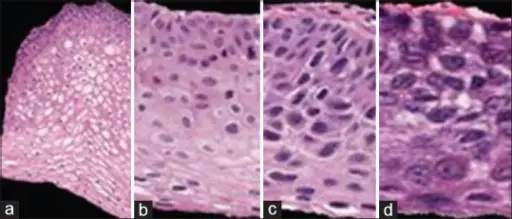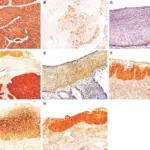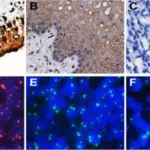Cervical Intraepithelial Neoplasia is precancerous condition in which abnormal cells grow on the surface of the cervix.
Squamous intraepithelial lesions of the cervix are the abnormal growth of squamous cells on the surface of the cervix.
What is the Pathology of Cervical Intraepithelial Neoplasia?
The pathology of cervical intraepithelial neoplasia is:
-Etiology: The cause of cervical intraepithelial neoplasia is infection with the human papilloma virus HPV
-Genes involved: None.
-Pathogenesis: The sequence of events that lead to cervical intraepithelial neoplasia: the HPV infection causes cellular changes like koilocytes. Causing lesions in the epithelial cells hence developing the disease.
-Morphology: The morphology associated with cervical intraepithelial neoplasia shows nuclear atypia in all epithelial layers.
-Histology: The histology associated with cervical intraepithelial neoplasia shows differentiation, maturation and stratification of cells and nuclear abnormalities.
How does Cervical Intraepithelial Neoplasia Present?
Patients with cervical intraepithelial neoplasia typically in females with 25 to 35 years age. The symptoms, features, and clinical findings associated with cervical intraepithelial neoplasia include abnormal or post-menopausal bleeding, abnormal discharge, changes in bladder function, abnormal appearance or palpation of cervix, pelvic pain
How is Cervical Intraepithelial Neoplasia Diagnosed?
Cervical intraepithelial neoplasia is diagnosed by pap smear test, colposcopy, HPV testing, and biopsy.
How is Cervical Intraepithelial Neoplasia Treated?
Cervical intraepithelial neoplasia is treated by: Loop electrosurgical excision procedure LEEP, conization biopsy, hysterectomy, cryocautery.
What is the Prognosis of Cervical Intraepithelial Neoplasia?
The prognosis of cervical intraepithelial neoplasia is good. Most of the time, it can be treated successfully. Ablation and resection are effective in about 90% of all cases, with a 10% chance of recurrence after treatment.



